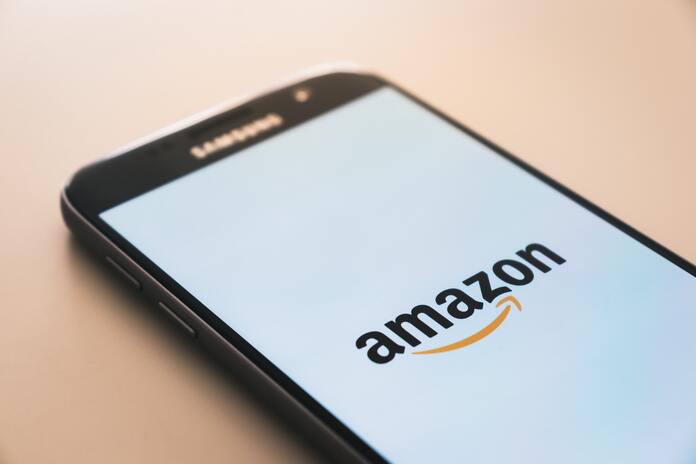Amazon Stock (NASDAQ:AMZN)
Analyzing Amazon’s (NASDAQ:AMZN) most recent quarter data reveals that they were strong and outperformed most financial outcomes from the corresponding quarter in 2022. Amazon Web Services, for example, increased by 16% year on year in the first quarter of 2022. However, the influence of global economic slowdowns on people’s spending power and, as a result, Amazon’s sales must be considered.
Financial Prospects
Amazon’s financial achievements in the first quarter of 2023 were remarkable when compared to the same period in 2022. Net sales climbed by 9% to $127.4 billion in Q1 2022, up from $116.4 billion in Q1 2022. This expansion was mostly driven by a 16% increase in Amazon Web Services (AWS) sales, which reached $21.4 billion year on year. Furthermore, Amazon’s operating income increased to $4.8 billion in Q1 from $3.7 billion in the same period last year. It’s also worth noting that Amazon’s North American sector has had a tremendous turnaround in the last year, going from an operational loss of $1.6 billion in Q1 2022 to an income of $0.9 billion in the most recent quarter. Amazon’s cash flow from operations increased by 38% to $54.3 billion in the trailing twelve months (TTM) compared to the previous record of $39.3 billion for the TTM ending March 31, 2022. Despite this expansion, their large capital expenditures resulted in negative free cash flow for a second year. Nonetheless, the TTM outflow of free cash flow was $3.3 billion, compared to $18.6 billion for the TTM ending March 31, 2022.
Amazon has been significantly investing in new projects such as healthcare and Project Kuiper, which will be its key emphasis in 2023. Project Kuiper intends to bridge the digital gap by bringing fast and affordable internet to underprivileged or unserved communities around the world. Both residential and commercial clients will need to build a customer terminal external antenna to communicate with satellites in space in order to use Kuiper’s broadband. Amazon is now creating two prototype satellites to test the full end-to-end communications network, with ambitions to deploy a commercial beta version this year and in 2024. Despite a drop in operating income for the Amazon Web Services division from $6.5 billion in Q1 2022 to $5.1 billion in the most recent quarter, AWS continues to have tremendous long-term profitability potential for the company. Despite a gloomy forecast for a decline in cloud computing, Amazon’s cloud business has substantial growth potential. While customers have cut back on spending owing to economic uncertainty since April, realizing that these macroeconomic slowdowns will pass is vital. Finally, as organizations seek cost savings and increased responsiveness and service quality through cloud computing, Amazon’s cloud will fuel tremendous growth. Furthermore, Amazon is well-positioned to benefit from the growth in e-commerce retail sales in the next few years. Retail consumer goods e-commerce accounted for 18% of total worldwide retail sales in 2020, and this figure is predicted to expand by more than 1% every year, reaching about 22% by the end of 2024.
The Effect of the Macroeconomic Outlook on Amazon
While Amazon’s financial prognosis remains positive, it is critical to examine the potential impact of broader economic conditions on consumer purchasing power and, thus, Amazon’s sales performance. The current economic prognosis is uncertain due to reasons such as high inflation rates, continued geopolitical tensions caused by Russia’s invasion of Ukraine, and the COVID-19 pandemic’s lasting impacts. According to the International Monetary Fund (IMF), global economic development is likely to recover slowly, with growth rates falling from 3.4% in 2022 to 2.8% in 2023 before rebounding to 3.0% by the end of 2024. However, if banking sector stress continues, global growth could fall to roughly 2.5% in 2023. Meanwhile, due to reduced commodity prices, global inflation rates are forecast to fall from 8.7% in 2022 to 7.0% in 2023; nevertheless, without significant economic slack, inflation is expected to recover more slowly and may not return to target levels until at least 2025.
According to the company’s CEO, Andy Jassy, Amazon is heavily investing in Large Language Models (LLMs) and Generative AI, since the company believes LLMs and Generative AI to be a huge deal for consumers and shareholders. As a result of these investments, as well as the global expansion of LLMs and Generative AI, which have recently piqued the interest of investors, various market research (for example, see here and here) attempting to explain the broad impact of LLMs and Generative AI on E-commerce and marketing, one could argue that Amazon’s financial results will improve significantly in the coming years. I’m not going to debate Amazon’s massive investments in LLMs and Generative AI. In fact, these investments are required for the company to remain competitive in the E-commerce market and to grow. Also, I agree with people who claim that Amazon’s expenditures in LLMs and Generative AI might significantly boost the company’s sales. However, there must be more potential customers who may opt to purchase Amazon’s products and services at first. In order for this to happen, interest rates must fall and inflation rates must return to about 2.0%. Inflation rates in the United States have dropped dramatically in the last year. However, it remains high (the annual inflation rate in the United States in April 2023 was 4.9%), and the Federal Reserve must maintain its restrictive monetary policy in order to meet its inflation target. The purchasing power of the consumer dollar in the United States has declined in the last year as a result of high inflation rates, and the World Bank forecasts 1.1% and 0.8% real GDP growth in 2023 and 2024 (compared to 2.1% in 2022 and 5.9% in 2021). It appears that the amount of money available in the hands of US customers to purchase Amazon goods and services would be quite small. Also, from 1Q 2021 to 1Q 2023, credit card debt in the United States climbed by $216 billion, from $770 billion to $986 billion. Interest rates, in particular, are critical components in determining the sustainability of governmental debt. As a result, US consumers must pay their relatively high bank debts, which may leave them with a limited amount of money to spend on Amazon. That could be the cause for the recent trend in consumer spending toward lower-priced items, as stated by CFO Brian Olsavsky during the results call:
“We saw moderated discretionary spending as well as shifts to lower-priced items and healthy demand in everyday essentials like consumables and beauty.” Third-party sellers, particularly firms that use Fulfillment by Amazon for storage and shipping, play an essential role in the selection available to buyers.”
Conclusion
We reviewed Amazon’s financial performance and important projects over the years in this comprehensive research. While Amazon has demonstrated strong financials, its future results are subject to a variety of factors such as currency fluctuations, changes in global economic and geopolitical conditions, consumer spending patterns influenced by debt levels and purchasing power, inflation, interest rates, and the rate of growth of online commerce and cloud services, among others. Our thorough analysis finds that Amazon’s AWS has considerable potential for profitability and sales growth, but that this may not happen right now owing to the present economic slump. Global economic circumstances are unlikely to improve by the end of 2024, according to IMF predictions. In conclusion, despite its long-term growth potential, we propose a hold rating for Amazon stock for now.
Featured Image: Unsplash

















